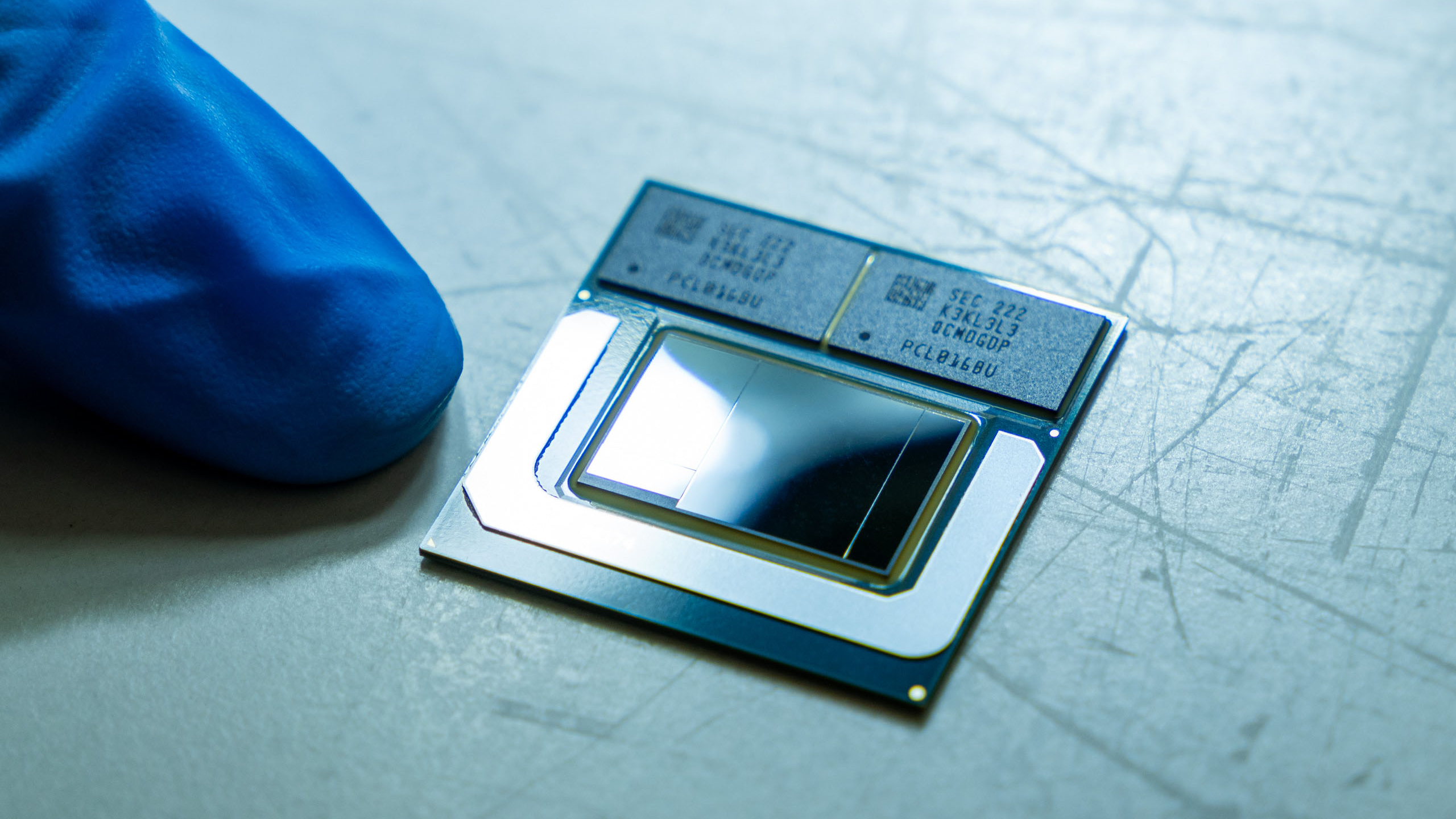Intel follows Apple's lead with Meteor Lake chip with on-package memory
One day we might see on-package DRAM, even.

Intel's taken inspiration from Apple's M1 and M2 chips with a new Meteor Lake chip that includes LPDDR5X inside the chip package. The neatly compact processor has been teased with two Samsung memory packages loaded onto it—a bid to improve performance and reduce a device's overall footprint.
The chip, as noted by Tom's Hardware, includes 16GB LPDDR5X-7500 memory from Samsung, bearing a close resemblance to how Apple has configured its latest ARM M2 chips. You can tell it's a Meteor Lake chip by the many tiles combined to make it up, which uses Intel's Foveros tech. Though as far as we know this architecture will only be used for mobile applications, such as laptops, for the time being.
You could say Intel was copying Apple's homework, but it is fair to say this sort of chip package is an obvious extension of new advanced packaging technologies used by Intel, TSMC (who produces Apple's chips) and Samsung. Apple just got there first, at scale, while Intel has been toying with the application of this sort of integrated memory for a couple years now.
For a thin and light laptop, the benefits of such a package are obvious. It's much smaller than your average processor package with memory surrounding it on a motherboard, and could provide a step up in efficiency or performance due to the proximity of the memory to the chip. The downside is that if the memory runs into a fault, then the entire chip has to be replaced. That shouldn't be a major change, however, as in many current applications of ultra thin devices, the memory is soldered down, as is the processor. The entire motherboard bears replacing in the case of an RMA regardless, unlike most gaming laptops where at least the memory is usually user-replaceable (but not always).
Samsung, the other major player in semiconductor production, has also been tentatively linked to an interesting project in collaboration with Intel. This so-called 'Cache DRAM' would consist of RAM chips hoisted onto an Intel chip package. While the details on this technology are sparse, noted only briefly in this report from Naver and noted by Revegnus on X, it does at least suggest there are even more exciting memory configurations in the future. This could perhaps prove a good way for Intel to compete with AMD's 3D V-Cache processors, should any such integration happen on desktop chips.
The point is, there's a lot more scope for weird and wonderful processor configurations nowadays. Intel has Foveros and EMIB, TSMC has its advanced packaging technologies under the 3DFabric umbrella, and Samsung has a slew of I-Cube and related 2.5D and 2D packaging technologies—all of which allow for more configurable and closely-linked chips.
Best CPU for gaming: Top chips from Intel and AMD.
Best gaming motherboard: The right boards.
Best graphics card: Your perfect pixel-pusher awaits.
Best SSD for gaming: Get into the game first.
The biggest gaming news, reviews and hardware deals
Keep up to date with the most important stories and the best deals, as picked by the PC Gamer team.

Jacob earned his first byline writing for his own tech blog. From there, he graduated to professionally breaking things as hardware writer at PCGamesN, and would go on to run the team as hardware editor. He joined PC Gamer's top staff as senior hardware editor before becoming managing editor of the hardware team, and you'll now find him reporting on the latest developments in the technology and gaming industries and testing the newest PC components.


